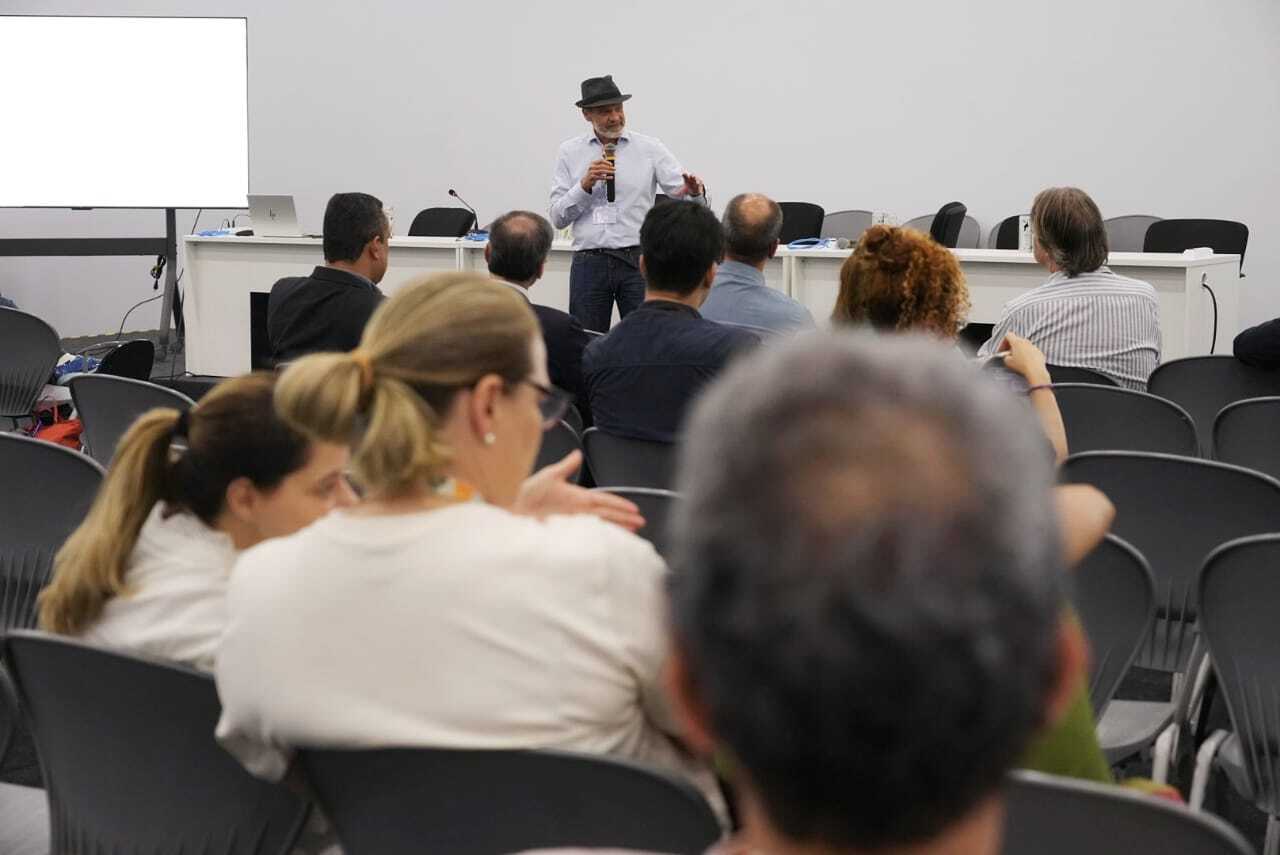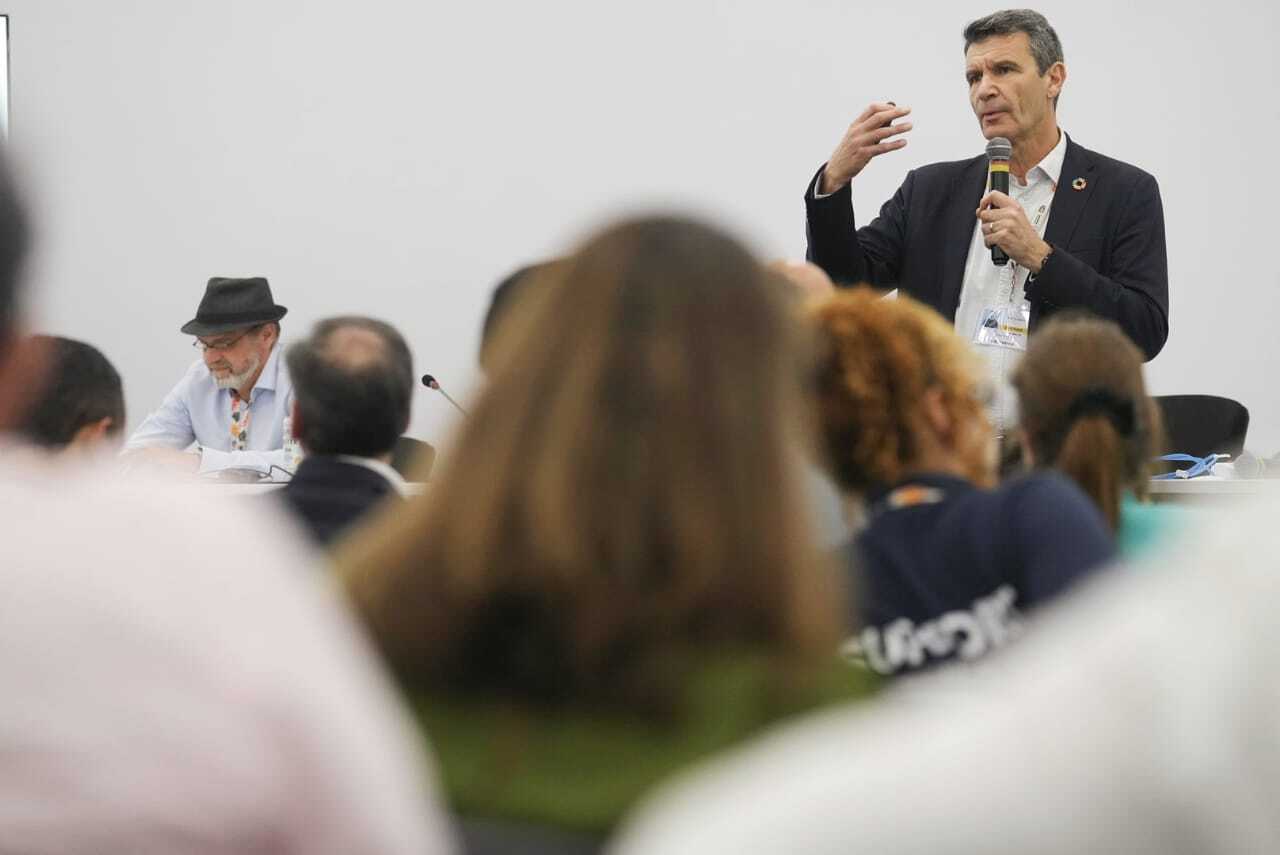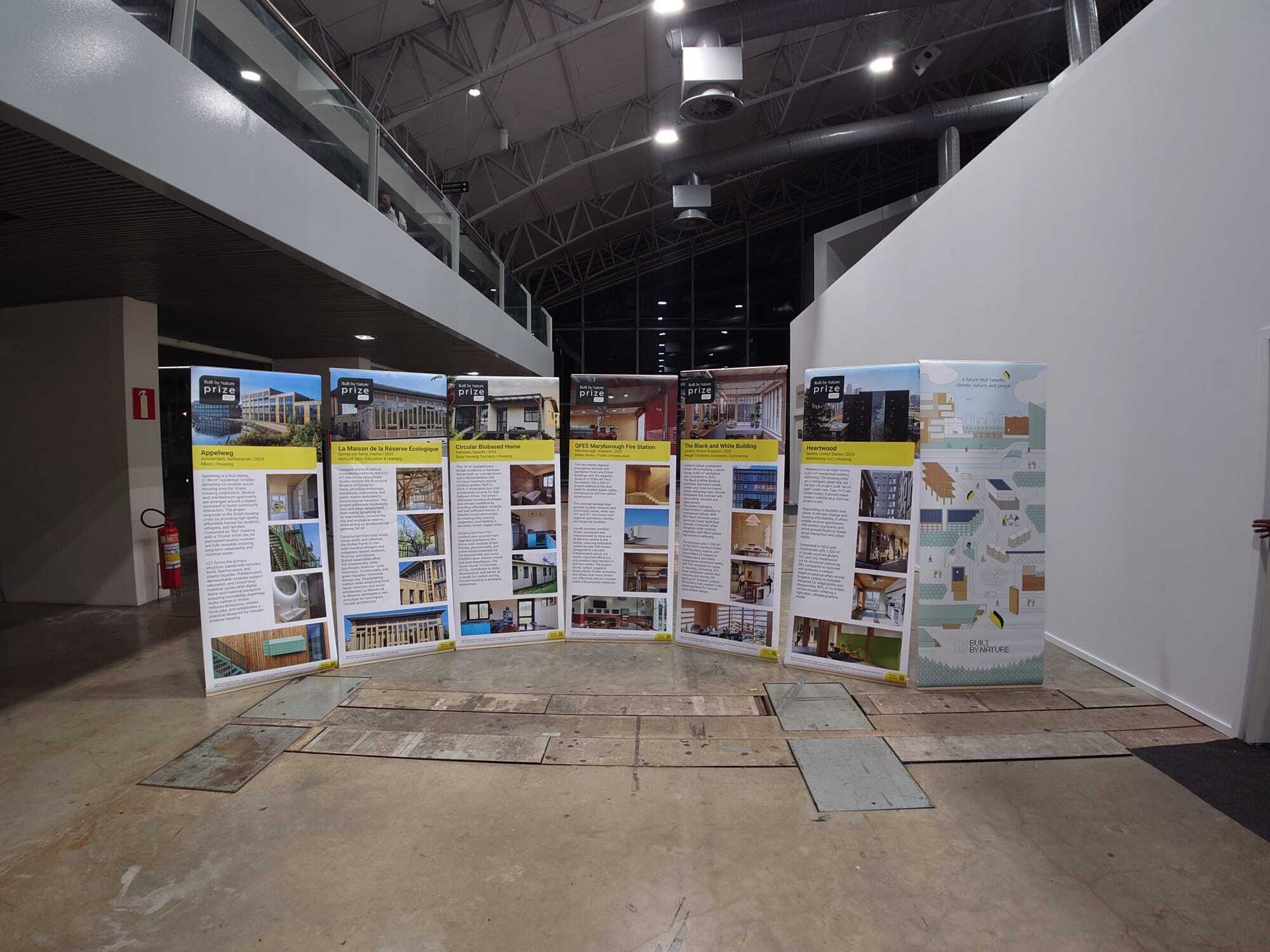Forests and Construction Converge at COP30 to Shape Climate Solutions
At an official UN side event organised by PEFC International, Built by Nature and Ibá brought together experts from forestry, construction, labour and public policy.
Forests and Construction Converge at COP30 to Shape Climate Solutions
17 November 2025 Event report
At an official UN side event organised by PEFC International, Built by Nature and Ibá brought together experts from forestry, construction, labour and public policy.
The session, titled “Forests, Timber and Construction: Nature-Based Solutions for a Changing Climate”, opened with the COP30 launch of the film “Principles for Responsible Construction”.
Rethinking how we build

Opening the dialogue, Thorsten Arndt, Head of Advocacy at PEFC International invited participants to revisit the long arc of building materials.
He traced the shift from wood to stone, concrete and steel and noted that many modern cities were designed to keep nature out. In his remarks he urged that “we need to go back to our roots and build with wood”.
He argued that the next phase is to bring nature back into cities by using wood and other forest-based materials, supported by responsible forest management and certification that ensures timber comes from sustainably managed forests.
Built by nature’s principles for change

Paul King, CEO of Built by Nature, provided the global framing. He described the climate impact of the built environment and the continuing pressure on forests worldwide.
Built by Nature works with frontrunner networks in Europe and East Africa and with governments that are beginning to mainstream sustainable timber.
King presented five principles for responsible timber construction.
He said the principles aim to maximise benefits “for the planet, for nature, for people” and include extending the lifespan of buildings, transparent carbon accounting, sustainable forestry, maximising carbon storage in wood and removing barriers that disadvantage timber. He highlighted the need for assurance that timber is responsibly sourced, including through certification.
Panel discussion: forests, people and supply chains
Thorsten moderated a panel, which brought together Susan Jones, Founding Architect at atelierjones LLC, Frédéric Denise, Founder of Archipel Zéro, George Tarus, Secretary for Forest Development at the Ministry of Environment, Climate Change and Forestry of the Republic of Kenya, Kennedy Matheka, Deputy Director for Building Safety and Climate Resilience at the State Department for Public Works in the Ministry of Lands, Public Works, Housing and Urban Development of the Republic of Kenya, Stefanie Sohm, Program Lead at the Kuehne Climate Center; and Per Olof Sjöö, President of Building and Wood Workers International.
Together they explored what it would take for timber and other forest-based materials to be recognised as essential climate solutions.
A central theme in the discussion was the need to shift long standing assumptions in construction. Several speakers noted that twentieth century habits still shape how buildings are designed and approved, and that greater confidence in timber at scale will require professional readiness, clearer guidance and supportive policy signals.
The group also reflected on the idea of forests as infrastructure that must deliver carbon, biodiversity, water and livelihoods simultaneously. Certification was discussed as a mechanism that helps ensure sustainability beyond the forest boundary by providing assurance on responsible management.
The human dimension of forest-based solutions featured strongly. Panelists highlighted that sustainable forest management depends on skilled foresters, and that labour, union and environmental policies should reinforce each other so that green sectors provide safe and decent jobs.
The conversation then turned to logistics and market development. Participants noted that shifting from cement to timber will reshape supply chains, require new services and create opportunities for regions with strong forest resources. Examples from Kenya illustrated how logistical costs can influence the viability of forest products and the emergence of local industries.
The panel closed with reflections on sourcing local wood, the benefits of short supply chains and the potential of community rooted forestry to contribute both to climate objectives and social development. Across the discussion, speakers emphasised that forests, construction, labour and markets are interconnected and must be considered together if timber is to play its full role in a low carbon future.
Ibá presents Brazil’s forest sector for the climate

Ibá used the event to launch its report “Brazil’s Forest Sector for the Climate”. Executive Director Ambassador José Carlos da Fonseca Jr described decades of innovation, science and technology that have shaped Brazil’s planted forest sector.
He explained that Brazil is the largest exporter of pulp, an important paper producer and a major wood panel player.
He said that member companies manage extensive planted forests while also preserving more than seven million hectares of native forest, exceeding national legal requirements.
José Carlos described a continuum that includes planted forests, protected natural areas and regions under restoration. He highlighted growing investment in restoration focused companies, job creation in regions affected by past environmental and social degradation and long-standing partnership systems with smaller and family landholders, who receive technical support across the full production cycle.
He emphasised the role of voluntary certification schemes, including PEFC, and concluded that “we are on the right side of the climate equation”.
Arauco: technology and industrial capacity
Arauco’s participation added a concise perspective from industry. Carlos Altimiras, CEO of Arauco Brazil, underscored the country’s technological strength and noted that Arauco has been present in Brazil for many years with forest operations and wood panel production.
He highlighted the company’s significant investment in a major new industrial facility in Mato Grosso State and said that private sector research is advancing new timber construction solutions. He supported the view of a forest continuum and affirmed the role of certification, saying it helps companies “do it the right way”.
He closed by welcoming the decision to connect forestry and construction within the same conversation.
Closing reflections
Returning to the stage, Thorsten encouraged stronger collaboration across forest and construction sectors. He noted that wood related industries often work separately despite shared objectives and called for deeper connections if timber is to serve as a credible climate and nature solution.
He ended with the simple message “please spread the word that good is good”.